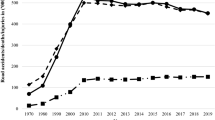Abstract
The operation of Metro, red (AC buses), green (Non-AC buses), purple (HoHo buses) and orange buses ( Cluster buses) has provided a new and strong image to public transport in Delhi. Due to availability of a large number of public modes, the concept of multi modal transport has led to success in Delhi and other Indian metropolitan cities. Integration and Interchange are two important components of multi modal transport system and hence security perceptions of the commuters’ at interchange need to be assessed for implementation of both general and specific security measures. In this context, qualitative model based on perceived relative importance of five security attributes of commuters’ at metro bus interchange has been developed. It is suggested that public transport sector has to make efforts and design the system to prepare and protect passengers and infrastructure. The other non-transport factors such as built environment, design, staff skills, awareness, regular inspection, uninterrupted power supply, etc can contribute to make public transport systems more secure. It is important to have policy level co-ordination among various operators and facilitators to follow up actions in emergency situations. Further, a separate “Multi Modal Transport Security Regulatory Authority” with strong fiscal base to support the cost of security measures and consequences of security failures, must be created.







Similar content being viewed by others
References
Amoore L (2006) Biometric Birders: Governing Nobilities in the War on Terror. Polit Geogr 25(3):336–351
Andreas P (2003) Redrawing the Line: Borders and Security in the 21st Century. Int Secur 28:278–311
Delhi Development Authority, 2007. Master Plan of Delhi for 2021, Ministry of Urban Development (Delhi Division), New Delhi.
Delhi Metro Rail Corporation (2005) Delhi Metro safety Guidelines in Evacuation Situation. Delhi Metro Print Material, New Delhi
Govt. of India (2005) Jawaharlal Nehru National Urban Renewal Mission Guidelines. Ministry of Urban Development, GOI, New Delhi
Govt. of India (2006) National Urban Transport Policy. Ministry of Urban Development, New Delhi
Guilford JP (1954) Psychometric Methods. McGraw Hill, New York
Hakim, S., 2003.Introductory Chapter in Conference Proceedings of Mayer Technology Summit: Homeland Security, Safety and Economic Development, San Francisco, California, July 17–18, 2003.
Hoel LA (1974) Public Transit Passenger Security and Safety in ‘Public Transportation: Planning, Operations and Management. Prentice Hall Inc., New Jersey, pp 464–478
Kumar, P.,Kulkarni, S.Y., Parida,M.,2009.Security Issues in Multi Modal Transport System for Delhi, In: Proceedings of TranSec India Conference 2009(A Conference on Transport Security),September 7–8, 2009, Mumbai, India.
Kumares CS, Forrest PR (1974) Personal Security in Buses and its Effects on Ridership in Milwaukee. TRR 287:13–25
DIMTS Ltd, 2006. Integrated Multi Modal Public Transport Network for NCT of Delhi, New Delhi.
Martin, J., 2008. An Integrated Approach to Rail Passenger Security, Traffic Engg. & Control, September 2008, pp 291–292.
Morse LB, Benjamin JM (1997) Analysis of Feeling of Security on Public Transit among Residents of Small Urban area. TRR 1557:28–31
Prentice, B.E.,2008. Tangible and Intangible Benefits of Transportation Security Measures, Journal of Transport Security, No.1, pp 3–14.
Shellow R, Romualdi JP et al (1974) Crime in Rapid Transit Systems: An Analysis and Recommended Security and Surveillance System. TRR 487:1–12
Shiftan Y., Kaplan S., and Hakkert S.,2003.Scenario Building as a Tool for Planning A Sustainable Transportation System,Transportation Research D: Transport and Environment, No 8, pp. 323–342.
Thomas AR (2008) The Case for a Transportation Security Research Agenda. J Transp Secur 1:1–2
TRANSEC (2005) UK Transport Security Programmes and Compliance. Dept for Transport, UK
Wilbur Smith Associates, Ministry of Urban Development, 2008. Traffic and Transportation Policies and Strategies in Urban Areas in India, New Delhi.
Author information
Authors and Affiliations
Corresponding author
Rights and permissions
About this article
Cite this article
Kumar, P., Kulkarni, S.Y. & Parida, M. Security perceptions of Delhi commuters at Metro-bus interchange in multi modal perspective. J Transp Secur 4, 295–307 (2011). https://doi.org/10.1007/s12198-011-0072-5
Received:
Accepted:
Published:
Issue Date:
DOI: https://doi.org/10.1007/s12198-011-0072-5




